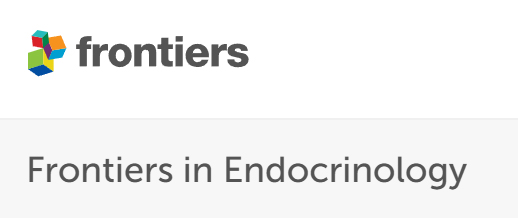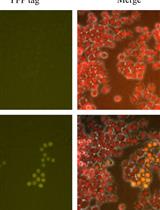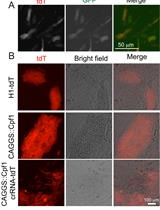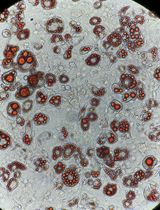- EN - English
- CN - 中文
Generation of Insulin-Producing Alpha TC1-6 Cells Using EpiCRISPR System for Targeted DNA Methylation
利用EpiCRISPR系统通过靶向DNA甲基化诱导Alpha TC1-6细胞产生胰岛素
发布: 2025年10月20日第15卷第20期 DOI: 10.21769/BioProtoc.5481 浏览次数: 52
评审: Laxmi Narayan MishraAnonymous reviewer(s)
Abstract
Diabetes lacks concrete curative strategies due to diverse aetiologies and, therefore, represents the perfect candidate for cell replacement therapy, since it is caused by either an absolute (type 1 diabetes) or relative (type 2 diabetes) defect in the insulin-producing beta cells of the pancreas. Pancreatic alpha cells are a promising source for transdifferentiation into insulin-producing cells as they share a common developmental origin with beta cells and exhibit a certain degree of cellular plasticity. Furthermore, impairment of glucagon signaling in diabetes leads to a marked increase in alpha cell mass, raising the possibility that such alpha cell hyperplasia provides an increased supply of alpha cells for their transdifferentiation into new beta cells.
In this protocol, we used the modular epigenetic CRISPR/dCas9 toolbox for targeted DNA methylation (EpiCRISPR) and silencing of the Arx gene (Aristaless Related Homeobox, Arx), which is essential for the maintenance of alpha cell identity. Methylation-based silencing of Arx initiates the reprogramming of pancreatic alpha cells into insulin-producing cells. As a key novelty, this protocol provides a direct route for epigenetically induced transdifferentiation of mouse pancreatic alpha TC1-6 cells into insulin-producing cells and thereby confirms a proof of concept of reversible cellular epigenetic reprogramming in vitro. In addition, this streamlined workflow addresses the inherent challenges of transfecting clustered alpha TC1-6 cells by optimizing their dissociation into single-cell suspensions, thereby improving uptake and reproducibility.
In summary, this approach for cell transdifferentiation involves precise epigenetic editing of a lineage-specific marker gene, thereby enabling direct lineage conversion in a safe and versatile strategy to generate insulin-producing cells by epigenetic reprogramming. In contrast to approaches that rely on viral vectors or permanent genome editing, this method reduces the risk of off-target effects and immunogenic responses while ensuring reproducibility. The combination of efficiency and precision makes it a valuable tool to advance regenerative approaches for diabetes therapy and to explore the epigenetic regulation of cell identity.
Key features
• This protocol describes a reprogramming of alpha TC1-6 cells into insulin-producing cells by inducing transdifferentiation through targeted epigenetic modulation of a single gene.
• Targeted repression of Arx reduces off-target effects while maintaining genomic integrity.
• This protocol requires at least five days to complete and includes cell preparation, nucleofection, and cell sorting.
• This approach avoids agents like viral vectors or nonspecific demethylating compounds that could limit its potential for therapeutic translation.
Keywords: Alpha cells (α细胞)Graphical overview
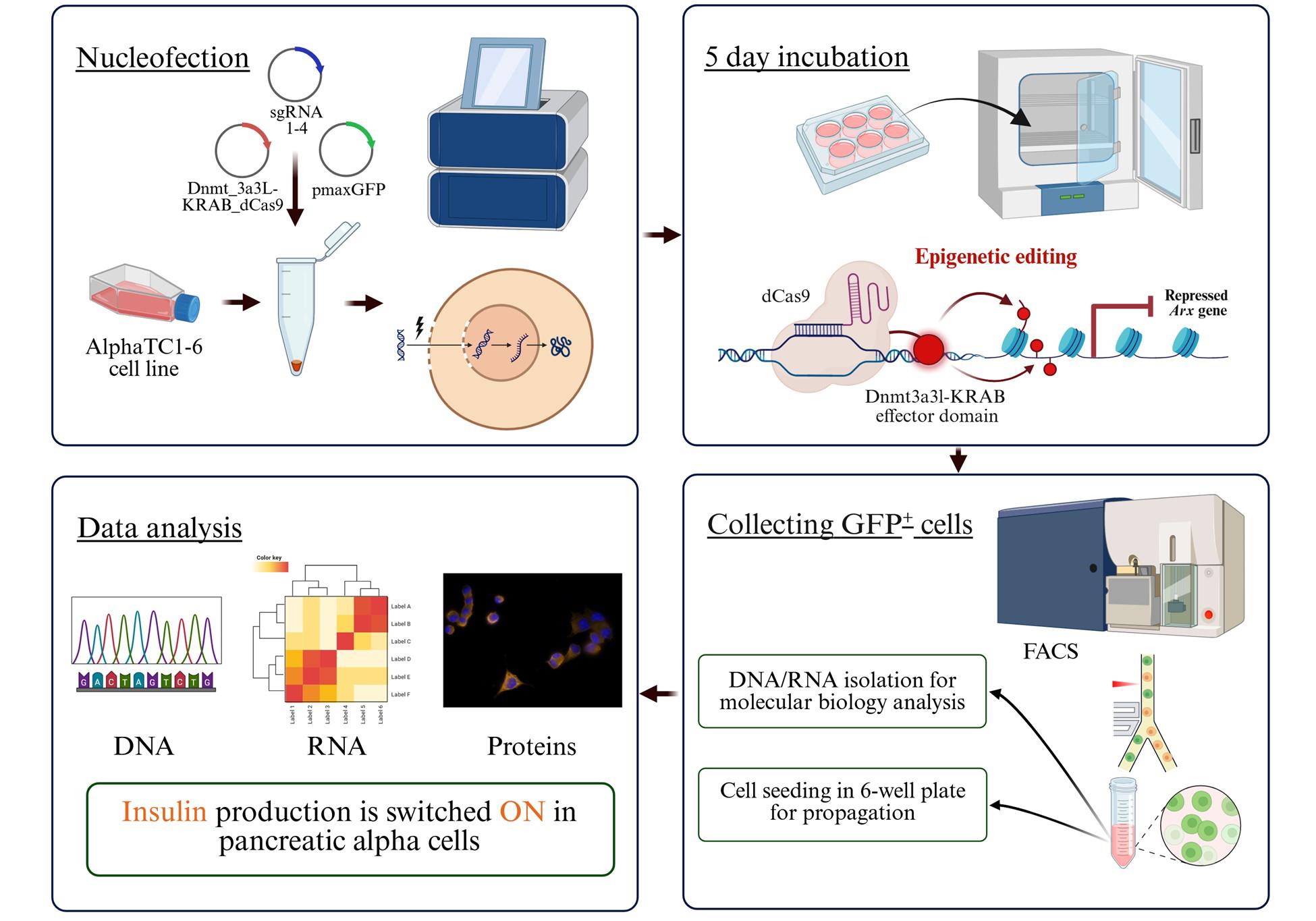
Workflow for the generation of insulin-producing pancreatic alpha TC1-6 cells using the EpiCRISPR system
Background
Cell transdifferentiation, which refers to the direct conversion of one mature cell type into another without passing through a pluripotent state, has emerged as a powerful strategy in regenerative biology [1]. Epigenetic modifications, such as DNA methylation, histone modifications, higher-order chromatin structures, or noncoding RNAs, play a regulatory role in gene expression, determining the developmental trajectories and the maintenance of cell identity and function [2].
Platforms for epigenetic editing, such as CRISPR/dCas9, which utilize catalytically inactive dCas9 fused to epigenetic effectors (e.g., DNMT3A, TET1, or KRAB domains), possess wide applicability across diverse biological systems and pathological conditions [3]. The EpiCRISPR toolbox that we used utilizes an engineered dCas9 that can specifically recognize a unique sequence at a target site, coupled with an effector domain capable of altering the methylation status of that site (DNA methyltransferases) and also repressing it due to the presence of the KRAB repressor (Figure 1C) [4]. Retargeting of the dCas9 effector complex to another locus is achieved by introducing a new single-guide RNA (sgRNA) sequence that is complementary to the desired target site. Regenerative medicine, which focuses on the repair and restoration of tissues and organs damaged by disease or injury, could significantly benefit from rapid progress in epigenetic reprogramming technologies. The initial steps for manipulating gene expression levels include target gene(s) identification, effector domain selection, and sgRNA design. The precision and efficiency of targeted reprogramming approaches, particularly those based on single-gene induced transdifferentiation, make them especially attractive for therapeutic applications, e.g., in monogenic disorders, reactivation of tumor suppressor genes, or oncogene silencing [5].
The strategy to use pancreatic alpha cells from the same organ (pancreas) for transdifferentiation was based on the fact that alpha-to-beta cell transdifferentiation can lead to restoration of beta cell mass while simultaneously reducing alpha cell mass, thus restoring the balance between pancreatic hormones (insulin and glucagon), which is perturbed in diabetes (bihormonal hypothesis of diabetes) [6]. Increasing the number of insulin-producing beta cells while decreasing the number of glucagon-producing alpha cells turns out to be a promising therapeutic avenue. Furthermore, impairment of glucagon signaling in diabetes leads to a marked increase in alpha cell mass, raising the possibility that such alpha cell hyperplasia provides an increased supply of alpha cells for their transdifferentiation into new beta cells [7]. In addition, the advantages of using pancreatic alpha cells for transdifferentiation into insulin-producing cells with this particular method for gene repression are numerous. Targeted epigenetic silencing of the lineage-specific marker gene for pancreatic alpha cells, Arx, combines cellular plasticity with precision control in targeting, offering a promising strategy to restore insulin production from the patient’s own pancreas (endogenously). Since other pancreatic endocrine and exocrine cell types already display silenced Arx expression through promoter methylation [8], this approach minimizes off-target effects and ensures specificity to alpha cells, which are resilient, numerous, and remain intact in most diabetic patients. The strength of the protocol described here lies in its distinction from previous approaches to alpha cell transdifferentiation, such as direct Arx knockout [9], which causes a permanent DNA alteration, or drug-induced Arx inhibition, which represents a non-invasive and scalable, but less specific, alternative, potentially affecting off-target GABA signaling pathways [10]. Directed epigenome editing avoids double-stranded DNA breaks and offers reversible, adjustable effects with a profile that is safer than permanent gene knockouts.
Despite the promise of reprogramming pancreatic alpha cells into insulin-producing beta cells, some challenges remain. Achieving high reprogramming efficiency without compromising cell viability still remains an important limitation. A major impediment of this approach is the low reprogramming efficiency, emphasizing the tremendous need for further optimization of EpiCRISPR systems to achieve robust and durable Arx promoter methylation and sustained insulin expression (Figure 2) [4]. In addition, the immunogenicity of reprogrammed alpha cells remains undefined. It is yet to be determined whether these cells are susceptible to autoimmune attack in the context of type 1 diabetes or if parallel immunomodulatory strategies are required. Besides, this approach is confronted by in vivo delivery challenges, as achieving specific and efficient targeting of pancreatic alpha cells is critical for experimental reproducibility and remains technically demanding. Therefore, the development of advanced delivery platforms, such as cell type–selective lipid nanoparticles, will be essential to ensure targeted, long-term, and non-toxic expression of epigenetic editing components [11]. Overcoming these challenges is crucial to developing safe and effective epigenome-based reprogramming strategies for diabetes therapy.
Materials and reagents
Biological materials
1. Alpha TC1 clone 6 cell line, αTC1-6 (American Type Culture Collection, Manassas, VA, USA, CRL-2934; origin: pancreas of a mouse with adenoma)
2. TOP10 Escherichia coli cells [Thermo Fisher Scientific, Invitrogen, C404003; origin: E. coli (K12)]
Reagents
1. Fetal bovine serum (FBS) (Sigma-Aldrich, catalog number: F9665) (-20 °C)
2. Bovine serum albumin (BSA) (SERVA Electrophoresis GmbH, catalog number: 11930.03) (4 °C)
3. DMEM, high glucose, GlutaMAXTM Supplement, HEPES (Gibco, Thermo Fisher Scientific, catalog number: 32430027) (4 °C)
4. DMEM, low glucose (Sigma-Aldrich, catalog number: D6046) (4 °C)
5. Cell dissociation buffer, enzyme-free, PBS (Gibco, Thermo Fisher Scientific, catalog number: 13151014) (4 °C)
6. RPMI 1640 medium (Gibco, Thermo Fisher Scientific, catalog number: 52400025) (4 °C)
7. Penicillin/streptomycin solution (Sigma-Aldrich, catalog number: P4333) (-20 °C)
8. Kanamycin sulfate from Streptomyces kanamyceticuc (Sigma-Aldrich, catalog number: K1377-1G) (4 °C)
9. Trypan blue solution, 0.4% (Gibco, Thermo Fisher Scientific, catalog number: 15250-061) [room temperature (RT)]
10. SF Cell Line 4D-Nucleofector X kit L (Lonza Solution and Supplement, catalog number: V4XC-2024); solution box (catalog number: PBC2-02250), supplement 1 (catalog number: S-08983), pmaxGFP 1.0 (lot. no. D-00068) (4 °C)
11. Plasmid Plus Midi kit (25) (Qiagen, catalog number: 12943); components: buffer P1(4 °C), buffer P2 (RT), buffer P3 (RT), buffer BB (RT), buffer ETR (RT), and buffer EB (RT)
12. Ethanol 100% (ZORKA Pharma, catalog number: 56/238) (RT)
13. HBSS w/o calcium, w/o magnesium, w/o phenol red (Biowest, catalog number: L0605) (4 °C)
14. Dimethyl sulfoxide (DMSO) (Santa Cruz Biotechnology, catalog number: sc-358801) (RT)
15. Tryptone (Difco, catalog number: 0123-01) (RT)
16. Yeast extract (Difco, catalog number: 0127-01) (RT)
17. KCl (Alkaloid Skopje, catalog number: 06743) (RT)
18. NaH2PO4 × 12 H2O (Merck, catalog number: 6579) (RT)
19. KH2PO4 (Moss Hemos, catalog number: 369K2) (RT)
20. NaCl (ZORKA Pharma, catalog number: 7647-14-5) (RT)
21. T4 DNA ligase (Thermo Fisher Scientific, catalog number: EL0011) (-20 °C)
22. 10× T4 ligase buffer (Thermo Fisher Scientific, catalog number: B69) (-20 °C)
23. BbsI enzyme (New England Biolabs, U.S.A, catalog number: R0539S) (-20 °C)
Solutions
1. DMEM high glucose full medium (see Recipes)
2. DMEM low glucose full medium (see Recipes)
3. PBS (see Recipes)
4. α final medium (see Recipes)
5. Buffer for cell transfection (see Recipes)
6. Buffer for cell sorting (see Recipes)
7. Lysogeny broth (see Recipes)
Recipes
1. DMEM high glucose full medium
| Reagent | Final concentration | Volume |
|---|---|---|
| DMEM high glucose | 89% | 445 mL |
| Penicillin/streptomycin | 1× | 5 mL |
| FBS | 10% | 50 mL |
| Total | 100% | 500 mL |
a. Perform all the steps in sterile conditions.
b. Pour out the 55 mL of clean medium from the 500 mL bottle; then, add FBS and penicillin/streptomycin solution to the bottle and mix by inverting several times.
c. Store at 4 °C until use.
2. DMEM low glucose full medium
| Reagent | Final concentration | Volume |
|---|---|---|
| DMEM low glucose | 89% | 445 mL |
| Penicillin/streptomycin | 1× | 5 mL |
| FBS | 10% | 50 mL |
| Total | 100% | 500 mL |
a. Perform all the steps in sterile conditions.
b. Pour out the 55 mL of clean medium from the bottle; then, add FBS and penicillin/streptomycin solution and mix by inverting several times.
c. Store at 4 °C until use.
3. PBS (1×, pH 7.4)
| Reagent | Final concentration | Quantity or volume |
|---|---|---|
| NaCl | 137 mM | 8 g |
| Na2HPO4·12H2O | 10 mM | 3.6 g |
| KCl | 2.7 mM | 0.2 g |
| KH2PO4 | 1.8 mM | 0.24 g |
| H2O | 1 L | |
| Total | 1× | 1 L |
a. Prepare 800 mL of distilled water in a 1 L glass cup.
b. Add 8 g of NaCl, 0.2 g of KCl, 3.6 g of NaH2PO4·12H2O, and 0.24 g of KH2PO4 to the solution.
c. Adjust the solution to pH ≈ 7.4.
d. Add distilled water to a final volume of 1 L.
e. After autoclaving, store the buffer at 4 °C (maximum 12 months).
f. Warm to 37 °C before use.
4. α final medium
| Reagent | Volume |
|---|---|
| DMEM high glucose full medium | 24.5 mL |
| DMEM low glucose full medium | 24.5 mL |
| BSA (1% in PBS) | 1 mL |
| Total | 50 mL |
a. Dissolve 0.5 g of BSA in 50 mL of PBS (1% BSA) and then filter the solution through a syringe filter (pore size 0.2 μm).
b. Mix DMEM high and low glucose full media and 1% BSA solution in a 50 mL conical tube by inverting several times.
c. Store at 4 °C until use.
d. Warm to 37 °C before use.
5. Buffer for cell transfection
| Reagent | Final concentration | Quantity or volume | ||||
| SF NucleofectorTM X solution | 77.52% | 82 μL | ||||
| Supplement 1 | 17.02% | 18 μL | ||||
| Plasmids | pMax eGFP | 0.47% | 0.375 μg | |||
| dCas9-Dnmt3a3L-KRAB | 0.99% | 1.5 μg | ||||
| Arx sgRNA | 1 | 0.99% | 3.99% | 1.406 μg | 5.625 μg | |
| 2 | 0.99% | 1.406 μg | ||||
| 3 | 0.99% | 1.406 μg | ||||
| 4 | 0.99% | 1.406 μg | ||||
| Total | n/a | 100 μL | ||||
a. First, warm the SF solution and supplement to RT.
b. Mix all the components of the buffer for cell transfection freshly prior to use.
c. The volume of added plasmids should not exceed 10 μL.
6. Buffer for cell sorting
| Reagent | Final concentration | Quantity or volume |
|---|---|---|
| HBSS | 97.6% | 48.8 mL |
| EDTA | 2 mM | 0.2 mL (0.5 M) |
| FBS | 2% | 1 mL |
| Total | n/a | 50 mL |
a. Mix the HBSS and EDTA solution with FBS freshly prior to use.
b. Warm to 37 °C before use.
c. Store the HBSS at 4 °C until use.
7. Lysogeny broth (LB)
| Reagent | Final concentration | Quantity or volume |
|---|---|---|
| Tryptone | 1% | 10 g |
| Yeast extract | 0.5% | 5 g |
| NaCl | 1% | 10 g |
| Distilled water | 1 L |
a. Dissolve all the components in 0.8 L of water on a mixer.
b. After component dissolving, adjust the pH to 7.2 and add water up to 1 L.
c. Sterilize by autoclaving and store at 4 °C for up to 6 months.
Laboratory supplies
1. Cell culture flasks, 25 cm2 (T-25 adherent flask) (Thermo Fisher Scientific, catalog number: 130189)
2. 6-well sterile culture plates (Thermo Fisher Scientific, catalog number: 130184)
3. 10 mL conical tubes (Sarstedt, catalog number: 62.9924.284)
4. 50 mL conical tube (Sarstedt, catalog number: 62.547.254)
5. Cell counting chamber slide, Neubauer Pattern (Blaubrand, catalog number: BR718605-1EA)
6. Sterile syringes 50 mL (Weigao, catalog number: SP503PLS)
7. Syringe filter, pore size: 0.2 µm (Sarstedt, catalog number: 83.1826.102)
8. Reaction tube, 1.5 mL, PP (Sarstedt, catalog number: 72.690.001)
9. Reaction tube, 2 mL, PP (Sarstedt, catalog number: 72.691)
10. 10 μL pipette tips (Eppendorf, catalog number: 0030 000.811)
11. 200 μL pipette tips (Sarstedt, catalog number: 70.3030)
12. 1,000 μL pipette tips (Sarstedt, catalog number: 70.3050)
13. FACS tube, 3.5 mL, L×Ø: 55 × 12 mm, PS (Sarstedt, catalog number: 55.484)
14. Glass cup, 1 L (LLG, Pirex catalog number: 9014005*LLG)
Equipment
1. Cell culture incubator (37 °C, 5% CO2) (Thermo Fisher Scientific, BB15, catalog number: 51023121)
2. Water bath (Thermo Fisher Scientific, Precision GP 20, catalog number: TSGP20)
3. Light microscope (Nikon, model: ECLIPSE Ts2)
4. Axio Observer Z1 microscope (Carl Zeiss Microscopy GmbH, Jena, Germany)
5. High-speed centrifuge (Eppendorf, model: 5804)
6. Swing bucket rotor (Eppendorf, model: A-4-44)
7. Mini centrifuge with standard rotor (Carl Roth, model: SD 220 VC)
8. AmaxaTM 4D-NucleofectorTM Core Unit (Lonza, 100-240, catalog number: 817B1102)
9. AmaxaTM 4D-NucleofectorTM X Unit (Lonza, catalog number: 817X0291)
10. Flow cytometer and cell sorter (FACS) (BD Biosciences, San Diego, USA, BD FACSAria III)
11. Vortex mixer (Neuation I Swix, model: TA1707AA0301)
12. Vertical laminar flow bench (Technology. Science. Life, Telstar, model: AV-100)
13. Ultracentrifuge (Beckman Coulter, model: Optima L-100 KSP)
14. Titanium rotor (Beckman Coulter, Type 70 Ti Fixed-Angle, catalog number: 06E 2591)
15. Incubated/refrigerated stackable shaker [Thermo Scientific MaxQ, model: SHKE6000-1CE (4352)]
16. NanoPhotometer MicroVolume spectrophotometer (Implen, Germany, catalog number: N60 UV/Vis)
17. Thermomixer (Eppendorf, Thermomixer comfort with 2 mL Thermoblock, catalog number: 5355)
18. Laboratory vacuum pump (Sartorius, Microstart Mini-Vac, catalog number: 025250)
19. Refrigerator (2–8 °C)
20. Freezer (-20 °C)
21. Deep freezer (-80 °C)
Software and datasets
1. FACS Diva software v6.1.3, 2011
2. BioRender (https://biorender.com)
3. SnapGene Viewer Version 7.0.1
4. GraphPad’s Prism8.0.1 (263) software for statistical analyses
Procedure
文章信息
稿件历史记录
提交日期: Aug 14, 2025
接收日期: Sep 17, 2025
在线发布日期: Oct 10, 2025
出版日期: Oct 20, 2025
版权信息
© 2025 The Author(s); This is an open access article under the CC BY-NC license (https://creativecommons.org/licenses/by-nc/4.0/).
如何引用
Đorđević, M. B., Hadžić, S. Ž. M., Rajić, J. J., Sarić, A. D., Marković, T. R., Dinić, S. S., Uskoković, A. S., Grdović, N. M., Mihailović, M. V., Jovanović, J. A. D. and Vidaković, M. S. (2025). Generation of Insulin-Producing Alpha TC1-6 Cells Using EpiCRISPR System for Targeted DNA Methylation. Bio-protocol 15(20): e5481. DOI: 10.21769/BioProtoc.5481.
分类
细胞生物学 > 细胞工程 > CRISPR-cas9
生物工程 > 合成生物学 > 基因修饰
您对这篇实验方法有问题吗?
在此处发布您的问题,我们将邀请本文作者来回答。同时,我们会将您的问题发布到Bio-protocol Exchange,以便寻求社区成员的帮助。
提问指南
+ 问题描述
写下详细的问题描述,包括所有有助于他人回答您问题的信息(例如实验过程、条件和相关图像等)。
Share
Bluesky
X
Copy link


